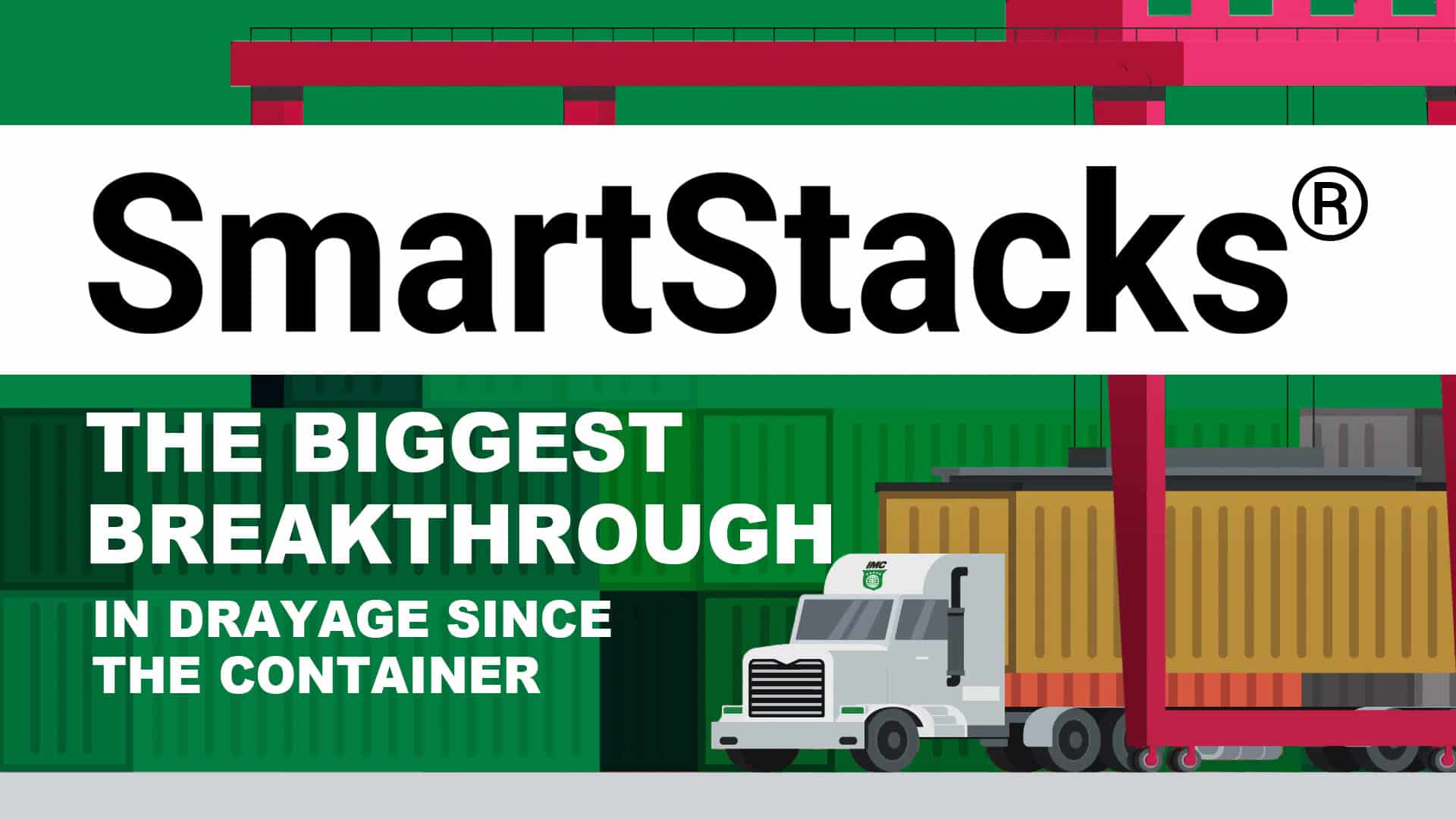Playing with Jenga to Re-imagine the Supply Chain

In a thought-provoking Fast Company article this spring, Shekar Natarajan, EVP and Chief Supply Chain Officer for AEO, the parent company of American Eagle Outfitters, made the following observation:
“If every retailer shared supply-chain assets, we could cut 9 trillion transportation miles a year, have 90,000 fewer trucks on the road, and massively reduce the industry’s carbon footprint.”
The perspective articulated by Natarajan – that the U.S. supply chain’s efficiency can be greatly improved by a collaborative approach to resource management – strongly resonates. Here is how this viewpoint has been successfully applied to re-imagine a key segment of the chain.
The Status Quo
Everyone has been impacted by the supply chain gridlock during the pandemic. The entire industry seemed to be crippled with a lack of resources. There were no places to store, no places to unload and no drivers to pull the containers full of products and supplies. And these issues continue to linger as the pandemic eases.
However, if you zoom in, you see that much of the problem is not the lack of resources, but rather their improper utilization causing massive bottlenecks. If you take another look at the pictures of severe congestion, you see huge lines of trucks and columns of mega ocean vessels anchored offshore. These images are pointing to the same problem. The marine terminals that connect the ships and trucks.
Therefore, adding more ships or drivers will not solve the current backlog. The industry is lacking suitable processes and infrastructure at the ports all over America, stifling our economy and international commerce. Action has to be taken now and collaboratively or this problem will continue to get worse.
Zooming in on a Specific Bottleneck
U.S. port and rail terminals are routinely ranked among the worst in the world with decreasing productivity year over year. The 2022 global Container Port Performance Index (CPPI) developed by the World Bank and S&P Global Market Intelligence, ranked two of the busiest U.S. ports – Los Angeles and Long Beach – as the most inefficient in the ranking of 370 global ports.
This glaring inadequacy is the result of the sheer import volume U.S. ports must handle. As the gateway to the world’s largest retail market (making up 24% of the worldwide total according to Statista), terminals must deal with thousands of trucks daily, each asking for incoming containers that are not in any manageable order and need to go to various locations. And with more cargo coming into the same restricted spaces, terminals are forced to stack containers higher and higher.
Drayage drivers – whose task is to relay containers from the ports to inland distribution centers – are instructed to pick up specific units from the endless stacks. Consequently, they are obliged to wait as cranes move numerous other containers out of the way to get to the correct one. Such unproductive, continuous reshuffling of containers causes significant waiting time for drives that translates into mounting inefficiency, unnecessary costs, punitive charges, and environmental harm with trucks idling for hours. As a result, drivers are leaving the industry for different fields in which they feel more productive.
The Solution – inspired by JENGA
Terminal cranes trying to navigate large stacks in search of specific containers is very similar to the mechanics of the game JENGA. Imagine trying to access one particular JENGA block by having to maneuver the other blocks out of the way, all the while needing to make sure not to destabilize the stack. This is essentially the choreography at the terminals. Once viewed from this perspective, a far better solution becomes evident: Instead of trying to access difficult to reach containers buried deep within a stack, why not simply take the one that is most accessible, regardless where it needs to go?
This is the approach taken by IMC – the largest U.S. marine drayage company based in Memphis, TN. “Our SmartStacks™ solution is a rather simple concept. It combines volume across multiple customers into one big pile from which our drayage truckers simply take whatever is the next container available.” – says Mason George, President of IMC Companies National Accounts, the $800 million start-up arm of IMC focused on breakthrough customer solutions.
Simplifying complexity is a powerful gateway to meaningful innovation, whose proof is in its execution. So let’s look at how and why SmartStacks work, and why they represent much needed good news for the supply chain.
What makes a SmartStacks smart?
SmartStacks are a refined version of a ‘peel pile’ or ‘flow stack’ that was first introduced in 2015 and used in fairly limited capacity until the strain of the current cargo crisis brought it back into use. In a peel pile, drivers at terminals pull up to the indicated “pile” and take the next container that is “peeled” from the pile. The system is used by big shippers with large volumes going to the same distribution centers to streamline drayage operations.
SmartStacks in contrast, combine containers from across multiple customers to gain economies of scale. As with a peel pile, SmartStacks also allocate to each driver the next available container. But, since the pile is shared by diverse shippers and thus multiple final delivery destinations, each driver must have a way of knowing exactly where to take the container. IMC was able to add this pivotal functionality through an internally developed, dynamic driver dispatching app. Leveraging the company’s 40+ years of expertise in drayage operations and automation, this handheld solution enables drivers to send real time notifications on a container-by-container basis of what unit they are picking up. The drivers are then instantly directed where to take the containers with communication flowing between them and IMC dispatch at 5G speed.
It is this critical, additional layer of traceability that make SmartStacks truly ‘smart’, allowing for the collaborative pooling of resources, and enhanced driver & terminal productivity.
Implementation Results
With the SmartStacks concept and app ready to go, IMC found a motivated terminal interested in ramping up operational velocity. To put things in motion, IMC’s team started combining all of its volume across customers on any given incoming ship to create a massive pile with 300 or more containers.
Currently IMC is working SmartStacks in Chicago, Memphis, LA, Houston and Newark, with plans to expand to every major port in an effort to dramatically increase the throughput of incoming container traffic to the U.S..
The results have been substantial. “Our drivers’ turn times are up 3-4 fold, they are able to deliver significantly more cargo to our customers, and we have seen a reduction of 66% in idling time at the ports – which translates to millions of pounds of carbon omission reduction each month. Therefore, the environmental benefits are significant as well.” – according to George.
Stronger Together
In the 1950’s, transportation pioneer Malcom McClean revolutionized international trade by developing the standardized, intermodal shipping container, saving thousands of man hours per marine vessel. Before the container, vessels were unloaded by hand in big crates and then reloaded onto drayage trucks whose drivers waited at the ports for countless hours to have their rigs unloaded and then reloaded. The standardized container changed our world for the better, but unfortunately the growth of trade has forced drivers to face the same problem as in the 1950’s— the inability to get in and out of ports effectively.
Implementing SmartStacks is a way to carry on Mr. McClean’s innovation legacy, and unblock the current terminal congestion. It also serves as a good illustration of a collaborative solution benefiting all stakeholders – customers, truckers, terminals, as well as the environment.
Written by Gabor George Burt.
Have you read?
Best CEOs In The World, 2022.
Global Passport Ranking, 2022.
International Financial Centers Ranking, 2022.
World’s Richest People (Top Billionaires, 2022).
Economy Rankings: Largest countries by GDP, 2022.
Countries and territories with the largest population, 2022.
Top Citizenship and Residency by Investment Programs, 2022.
Bring the best of the CEOWORLD magazine's global journalism to audiences in the United States and around the world. - Add CEOWORLD magazine to your Google News feed.
Follow CEOWORLD magazine headlines on: Google News, LinkedIn, Twitter, and Facebook.
Copyright 2025 The CEOWORLD magazine. All rights reserved. This material (and any extract from it) must not be copied, redistributed or placed on any website, without CEOWORLD magazine' prior written consent. For media queries, please contact: info@ceoworld.biz








